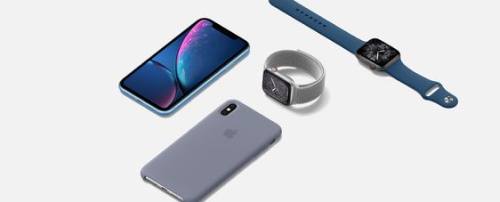Every time you use your phone browsing the web, chatting, sharing photos, or installing apps you’re giving away bits of personal data. Bad actors (hackers, spyware makers) look for weak points to sneak in. iOS 17 adds new protections and tightens existing ones so your iPhone is harder to breach, and you stay more in control of your data.
Key Security & Privacy Upgrades in iOS 17
Here are the major changes, explained simply:
1. Memory Integrity Enforcement (MIE) fighting deeply hidden attacks
One of the biggest new changes is Memory Integrity Enforcement.
- This works at a very low level (hardware + software) to prevent memory corruption bugs (buffer overflows, use-after-free, etc.).
- These bugs are often exploited by sophisticated spyware tools. MIE helps block many of those attacks before they even happen.
- Apple built this so it’s “always on” for supported devices, covering the kernel (core of the system) and many user processes.
In short: it adds a stronger shield at the deepest layers of your iPhone.
2. Stronger Lockdown Mode
Lockdown Mode was introduced earlier for extreme-risk users (journalists, activists, etc.). iOS 17 refines it further:
- It now works with Apple Watch, not only iPhone, so the protection extends to your smartwatch too.
- In Lockdown Mode, the system strips geolocation (GPS) data from photos before you share them so people can’t see where a photo was taken.
- It stops your iPhone from auto-joining unsecured Wi-Fi networks and also blocks connections to old 2G cellular networks (which are less secure).
- It further limits certain features like iMessage and HomeKit (smart home) features that might be abused by attackers.
This mode trades off convenience for maximum security you’ll lose or disable some features to stay safer.
3. Smarter URL / Link Tracking Protection
Websites and marketers often tack tracking parameters (extra codes) onto links so they can follow you around the internet. iOS 17 reduces this tracking:
- In Mail, Messages, and Safari’s Private Browsing, iOS 17 will automatically strip tracking parameters from links.
- In Safari, Private Browsing windows are now locked — you need Face ID / Touch ID (or passcode) to open them again after they’ve been closed.
- Also, Safari doesn’t allow unknown trackers (that try to follow you across sites) to load in private mode.
This means less “you were here, you also went there” profiling by advertisers.
4. Granular Control Over Photos & App Access
iOS 17 gives you finer control over what apps can see or do:
- Photo access: When an app asks permission to access your Photos, you can let it see only specific photos (not your entire library).
- Calendar access: If an app wants to add something to your calendar, it can do so — but it won’t automatically get full read access to your entire calendar.
- App permissions resetting / defaults: Apple continues its trend of giving users control over “what data an app can access” (contacts, microphone, camera, etc.).
These changes help prevent overreach by apps.
5. Password / Passkeys & Sharing Security
iOS 17 improves how you manage logins and share them:
- Shared Passwords / Passkeys: You can now create groups of passwords or passkeys to share securely with family/friends.
- Verification codes (for two-factor login) that come via Mail can be filled in with one tap (without leaving Safari).
- You can also have them auto-deleted once used.
- When you change your lock screen passcode, the old one can still be used for up to 72 hours to reset it, in case you forget. There’s also a button to expire the old code immediately.
These make login smoother while preserving security.
6. Some Surprises Things You Need to Check
Even with all the good stuff, there are a few caveats:
- Several users reported that some privacy settings got re-enabled during the iOS 17 update, even though they had them turned off before. E.g. “Significant Locations” or analytics options.
- Because of that, it’s wise to double-check your privacy settings after updating.
What You Should Do (Your Checklist)
- After updating, go into Settings → Privacy & Security and review all permissions (Photos, Location, Microphone, etc.).
- In Safari settings, switch on the option to require Face ID / Touch ID to unlock private browsing tabs.
- If you’re a user who might be at high risk (journalist, lawyer, etc.), consider turning on Lockdown Mode.
- Use strong passwords / passkeys, and take advantage of iOS 17’s ability to share securely among trusted people.
- Keep your iPhone software up to date, because Apple continues to push security patches.
Conclusion
iOS 17 marks a meaningful step forward in Apple’s efforts to protect user data against sophisticated attacks. The deep protection of memory via MIE, improved Lockdown Mode, and better control over link tracking and app permissions all help make your iPhone a more secure place.
That said, no system is perfect. Updates sometimes reset privacy toggles, and highly motivated attackers may still find new ways. So it’s a good habit to stay alert, review your settings often, and use extra features (like Lockdown Mode) when needed. Shop Now
Frequently Ask Questions
1. What is iOS 17?
iOS 17 is Apple’s latest operating system for iPhones, featuring new communication tools, personalization options, and performance improvements.
2. Which iPhones support iOS 17?
iOS 17 is available for iPhone XS and newer models. Older devices like the iPhone X and iPhone 8 are not supported.
3. What are the key features of iOS 17?
Major features include Contact Posters, Live Voicemail, NameDrop for sharing contacts, StandBy mode, and improved Autocorrect and AirDrop.
4. How can I update to iOS 17?
Go to Settings → General → Software Update, and follow the on-screen instructions to download and install iOS 17. Make sure your device is backed up first.
5. Is iOS 17 safe to install?
Yes, iOS 17 includes the latest security updates and privacy enhancements. It’s always recommended to keep your iPhone up to date.
6. Can I downgrade from iOS 17 to an older version?
You can only downgrade while Apple is still signing the previous iOS version. After that, it’s not possible to revert to an older system officially.


